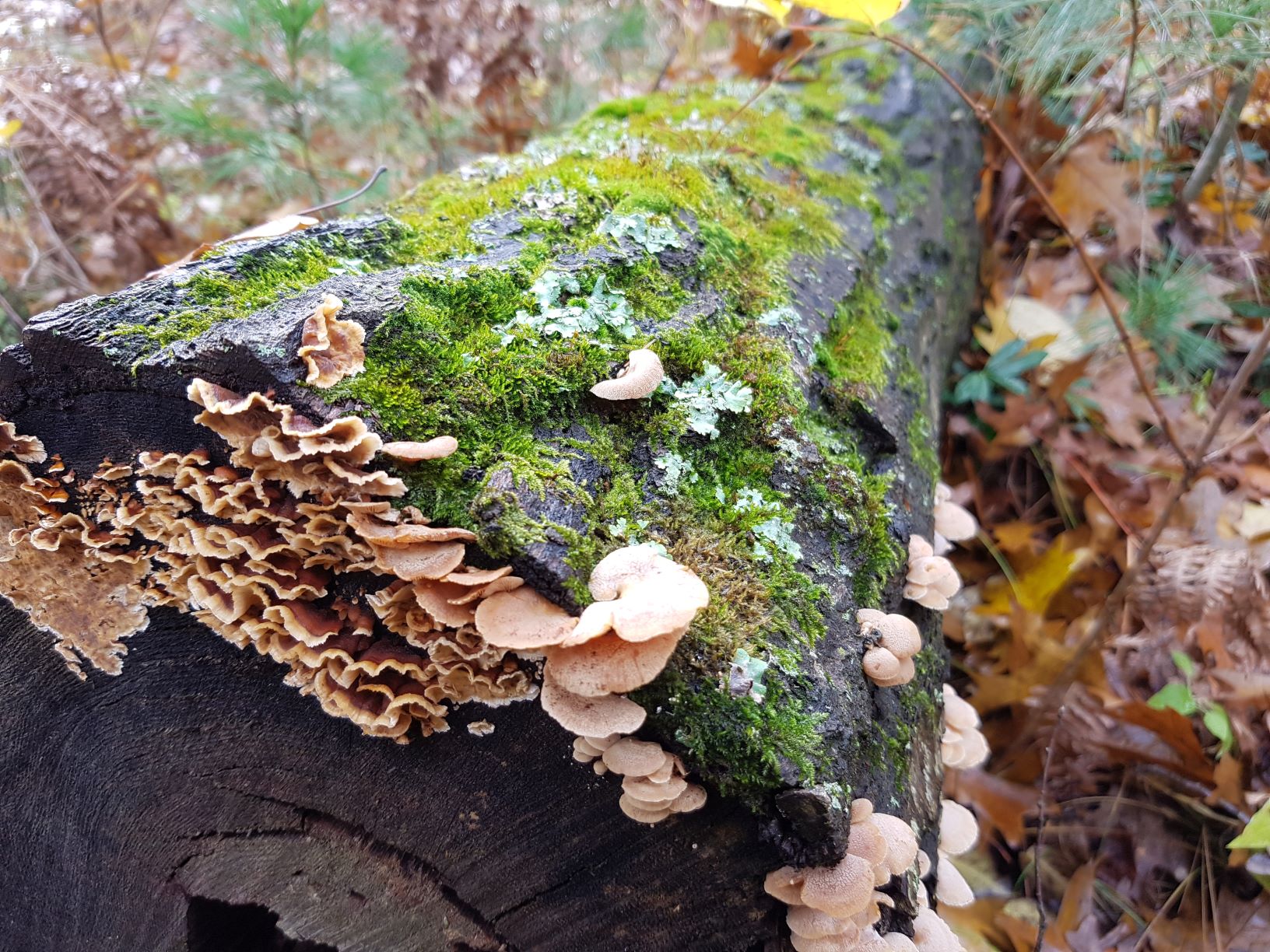We don’t want to discourage kids from finding magic in nature.
But we’re also kind of like the Lorax; we need to speak for the trees (and all the other critters that live in provincial parks).
Kids sleep better, have a longer attention span, and feel more creative when they spend time in green space. So getting outside is a great idea!
Kids also love building forts. However, this outdoor pastime can actually harm nature.
The flaws with forts

Sticks and logs are important habitat for small mammals, salamanders, snakes, bugs, and lots of other species. These animals are easily caught by predators when they lose their hiding spots.
Mosses and fungi are an important part of the nutrient cycle and many rely on wet wood on the forest floor to grow.
 Scraping up branches or leaves for your fort can uproot seedlings or small plants.
Scraping up branches or leaves for your fort can uproot seedlings or small plants.

Lots of species — such as the amazing and at-risk Five-lined Skink — need sticks and logs for nesting places.
Sometimes fort-builders get carried away and cut down or break off branches from living trees. This is illegal in protected areas like provincial parks, and it can hurt or kill the trees.
And it’s not only nature that can be harmed.
Some forts are large and use big logs, which could roll or topple and injure someone.

Not to be a stick in the mud
We get it – forts are fun. If you can’t imagine your outdoor adventures without forts, here are some ideas that are better for nature:
- Anything can be a fort if you use your imagination! Look for a spot that is naturally fun and doesn’t require you to move sticks or logs. A hideout under the branches of a pine tree is a great option that doesn’t harm nature
- Bring a blanket! We all know blanket forts are as much fun as stick forts. Why not rig up something wonderful (carefully without damaging any trees) and let the imaginative play begin
- If you do still move or disrupt sticks, we kindly ask that you do your best to put them back how you found then when you’re done. This will give all the stick-loving creatures the chance to enjoy them too
Leave no trace
One of the best ways to protect nature in provincial parks is to leave no trace. This means that when you pack up and leave, no one can tell you were ever there.

When we protect park habitat, all visitors (and the many species that live in parks) can enjoy the views and experiences that are provided by healthy ecosystems. Which is the reason most of us want to spend time in nature in the first place!
Keeping sticks on the ground is a great start. Other activities to avoid are moving or stacking rocks, leaving painted rocks, taking away driftwood, or picking flowers.
Building a fort or picking some flowers may seem harmless. But imagine if all of our annual visitors did the same thing. The damage would be devastating.
Be a park protector
We love how passionate park visitors are about enjoying time outdoors and appreciating nature.
Part of loving parks includes protecting them!

The next time you spend time in a your local provincial park, remember the ways that your actions can help protect our beautiful natural spaces and all of the species who rely on them.
